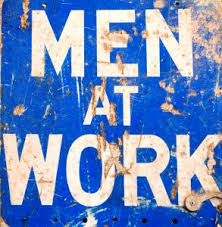Blogger and career guru (and newly married friend!) Marci Alboher just posted about my Recessionwire column, Love in the Time of Layoff, over at Yahoo’s Shine. Her piece is titled “When Your Man or Woman Gets Laid Off.” Writes Marci (and oh how I heart her for so many reasons):
The column is so readable because it talks stuff few people are talking about. Like what happens to a heterosexual relationship when a woman suddenly becomes the sole breadwinner, what happens when someone who’s used to office culture suddenly gets used to the rhythms of home life, how two people (one of whom is pregnant with twins) can avoid driving each other batty when suddenly confined to a 650 square foot apartment.
Like any good serial narrative, Love in the Time of Layoffs had a major plot twist this month: Marco is back to work, albeit in a freelance gig. Questions abound for interested readers. Will he keep the job? Will the couple inch back into their former patterns again? What will happen once the babies arrive …..?
Good question. Time (like, gulp, hopefully 4 more weeks) shall tell….!

 My latest Love in the Time of Layoff column is now up at Recessionwire.com. It’s titled
My latest Love in the Time of Layoff column is now up at Recessionwire.com. It’s titled 

 A new book has caught my eye, covering some of my favorite themes:
A new book has caught my eye, covering some of my favorite themes:  A simply-must-read over at American Prospect,
A simply-must-read over at American Prospect,  My latest, up at Recessionwire.com
My latest, up at Recessionwire.com Why do some men support gender diversity in leadership while others REALLY DON’T? Catalyst asks this question through a new body of research evaluating men’s involvement with gender diversity in a report released today titled,
Why do some men support gender diversity in leadership while others REALLY DON’T? Catalyst asks this question through a new body of research evaluating men’s involvement with gender diversity in a report released today titled,  I just hung up the phone with a new author who has a book project that I’m very excited about. I can’t tell you much about her project just yet—I’m trying to keep it on the down low for as long as possible—but I’ll say this: it kicks some serious bottom, and I can’t wait to work with her on it in the next handful of months.
I just hung up the phone with a new author who has a book project that I’m very excited about. I can’t tell you much about her project just yet—I’m trying to keep it on the down low for as long as possible—but I’ll say this: it kicks some serious bottom, and I can’t wait to work with her on it in the next handful of months. Can someone puh-lease get all the Wall Street
Can someone puh-lease get all the Wall Street 